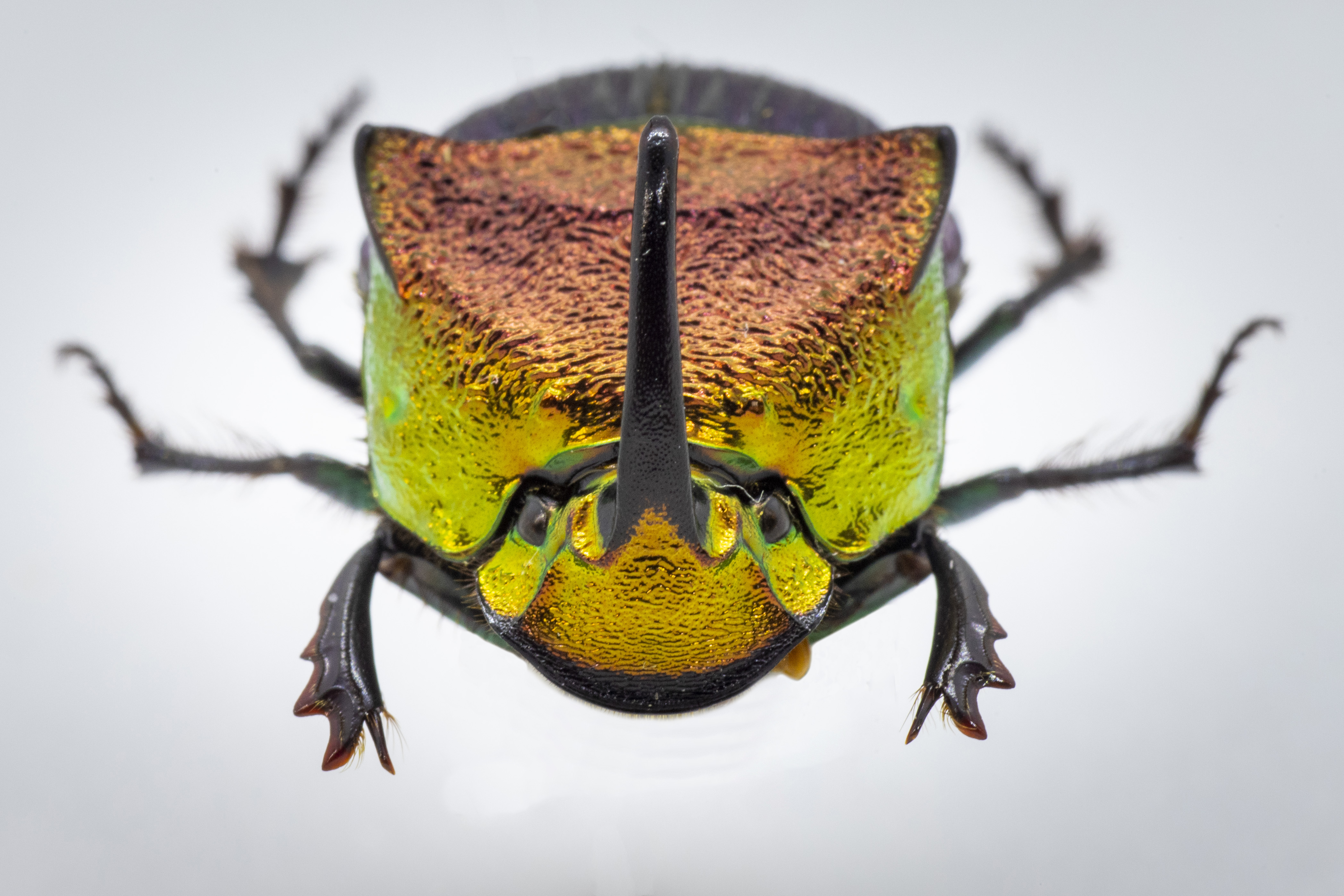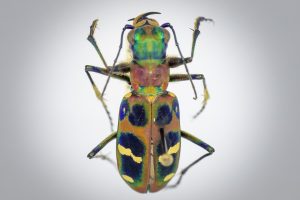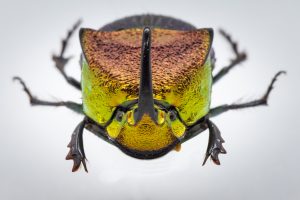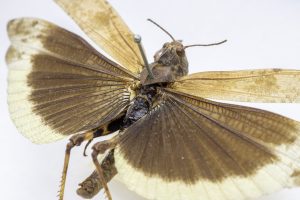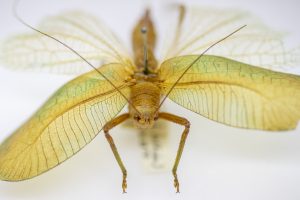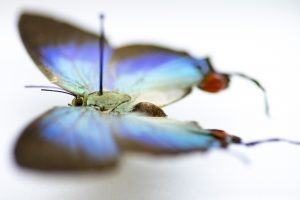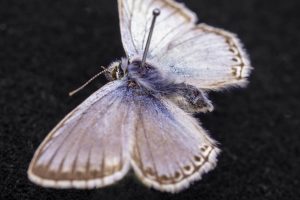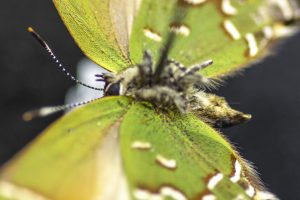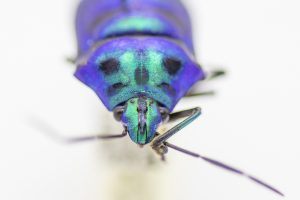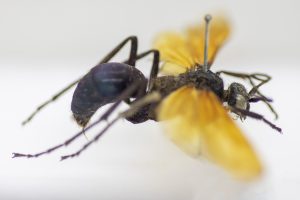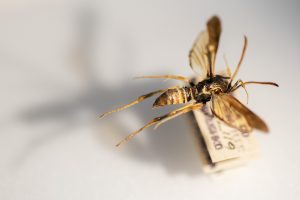Behind locked doors on the first floor of the Biology/Physics Building are massive moveable shelves containing a plethora of preserved flora and fauna — fossilized plants and perfectly intact flowers as well as creatures great and small, from microscopic mites and seed bugs to black bear skulls and a confiscated polar bear skin.
The Department of Ecology and Evolutionary Biology’s Biodiversity Research Collections contain hundreds of thousands of specimens representing about 22,000 different species amassed by faculty, staff, students, and amateur collectors over decades.
“I always tell students, you can go back to the same place, you can look for the same thing, but you can’t ever go back in time,” Jane O’Donnell, the manager for the Insects, Parasites, and Ant Guests collections, said during a recent tour. “We’re a time machine in some sense, but we never get out of date in another sense.”
The EEB collections also include Birds, Fish, Fossil Plants, Herbarium, Herpetofauna, and Mammals, as well as the living plant collection called the UConn Rainforest. Researchers here and around the world can use the collections in their work, by visiting, having specimens sent to them, or by accessing the digitized collections. Students visit the collections in introductory biology courses and can take courses on maintaining natural history collections.
“These are the organisms that share the planet with us. Natural history collections preserve our natural heritage,” O’Donnell says. “I think people relate a little easier to things that preserve our cultural heritage, like art museums and libraries, and this is analogous to that in the broad sense.
“It’s our relationship to the natural world, which is becoming more and more tenuous as time goes on,” she says.
View some of the insects in the collection in this gallery of images by UConn Photographer Sean Flynn:
Listen to an interview with O’Donnell, who retires January 1 after nearly 40 years as a collections manager, from the UConn 360 podcast:
